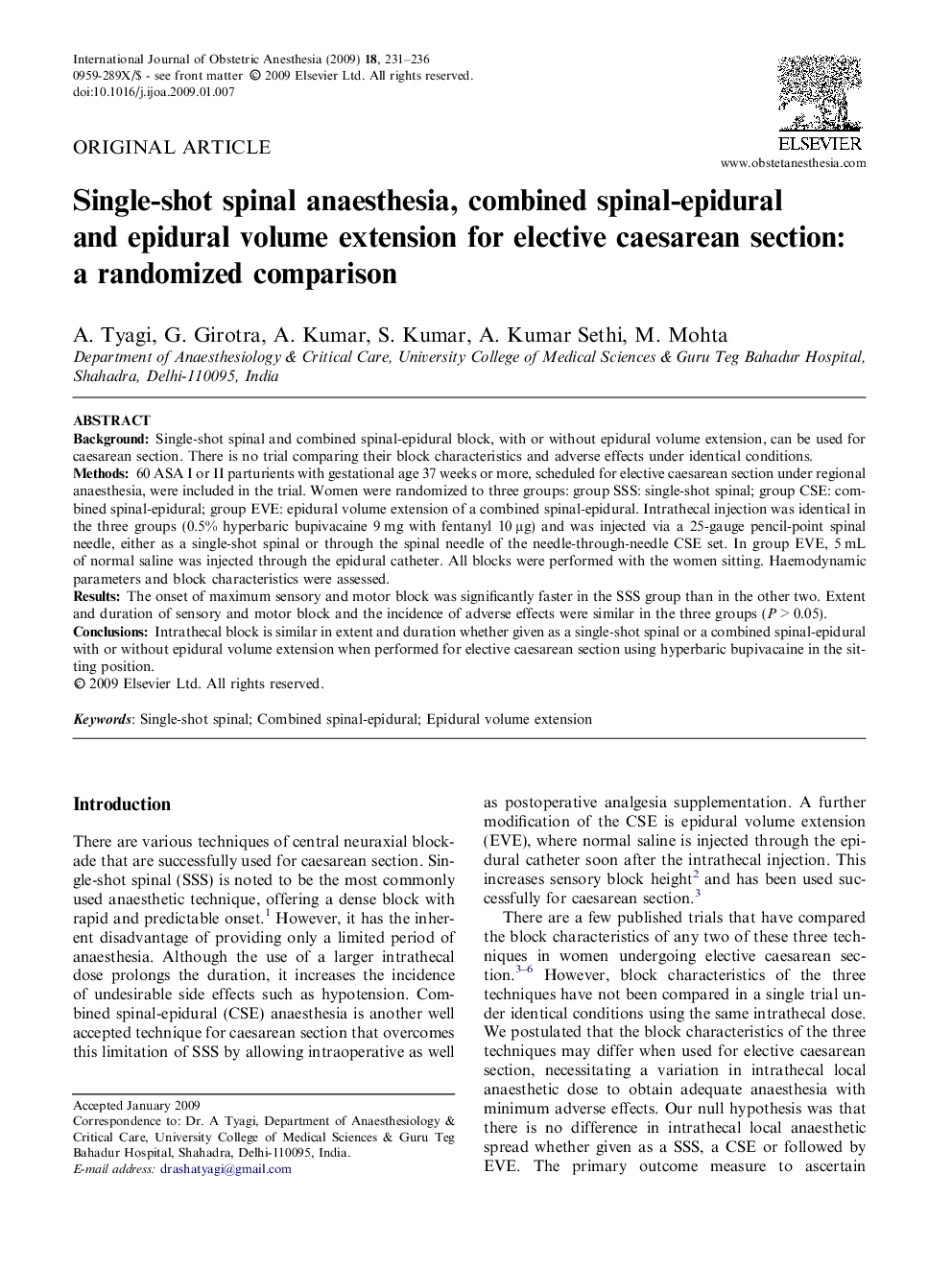| Article ID | Journal | Published Year | Pages | File Type |
|---|---|---|---|---|
| 2758430 | International Journal of Obstetric Anesthesia | 2009 | 6 Pages |
BackgroundSingle-shot spinal and combined spinal-epidural block, with or without epidural volume extension, can be used for caesarean section. There is no trial comparing their block characteristics and adverse effects under identical conditions.Methods60 ASA I or II parturients with gestational age 37 weeks or more, scheduled for elective caesarean section under regional anaesthesia, were included in the trial. Women were randomized to three groups: group SSS: single-shot spinal; group CSE: combined spinal-epidural; group EVE: epidural volume extension of a combined spinal-epidural. Intrathecal injection was identical in the three groups (0.5% hyperbaric bupivacaine 9 mg with fentanyl 10 μg) and was injected via a 25-gauge pencil-point spinal needle, either as a single-shot spinal or through the spinal needle of the needle-through-needle CSE set. In group EVE, 5 mL of normal saline was injected through the epidural catheter. All blocks were performed with the women sitting. Haemodynamic parameters and block characteristics were assessed.ResultsThe onset of maximum sensory and motor block was significantly faster in the SSS group than in the other two. Extent and duration of sensory and motor block and the incidence of adverse effects were similar in the three groups (P > 0.05).ConclusionsIntrathecal block is similar in extent and duration whether given as a single-shot spinal or a combined spinal-epidural with or without epidural volume extension when performed for elective caesarean section using hyperbaric bupivacaine in the sitting position.
